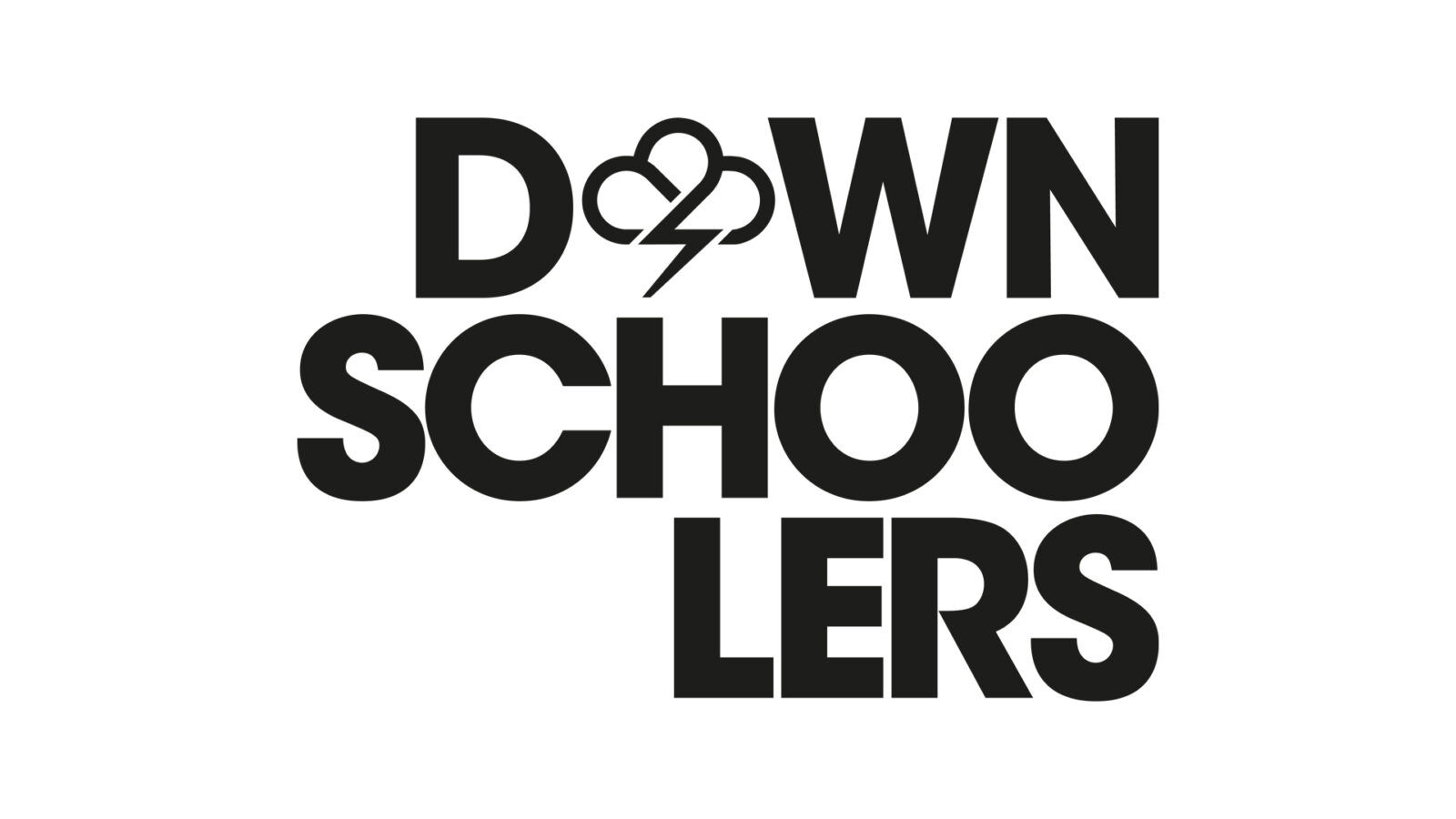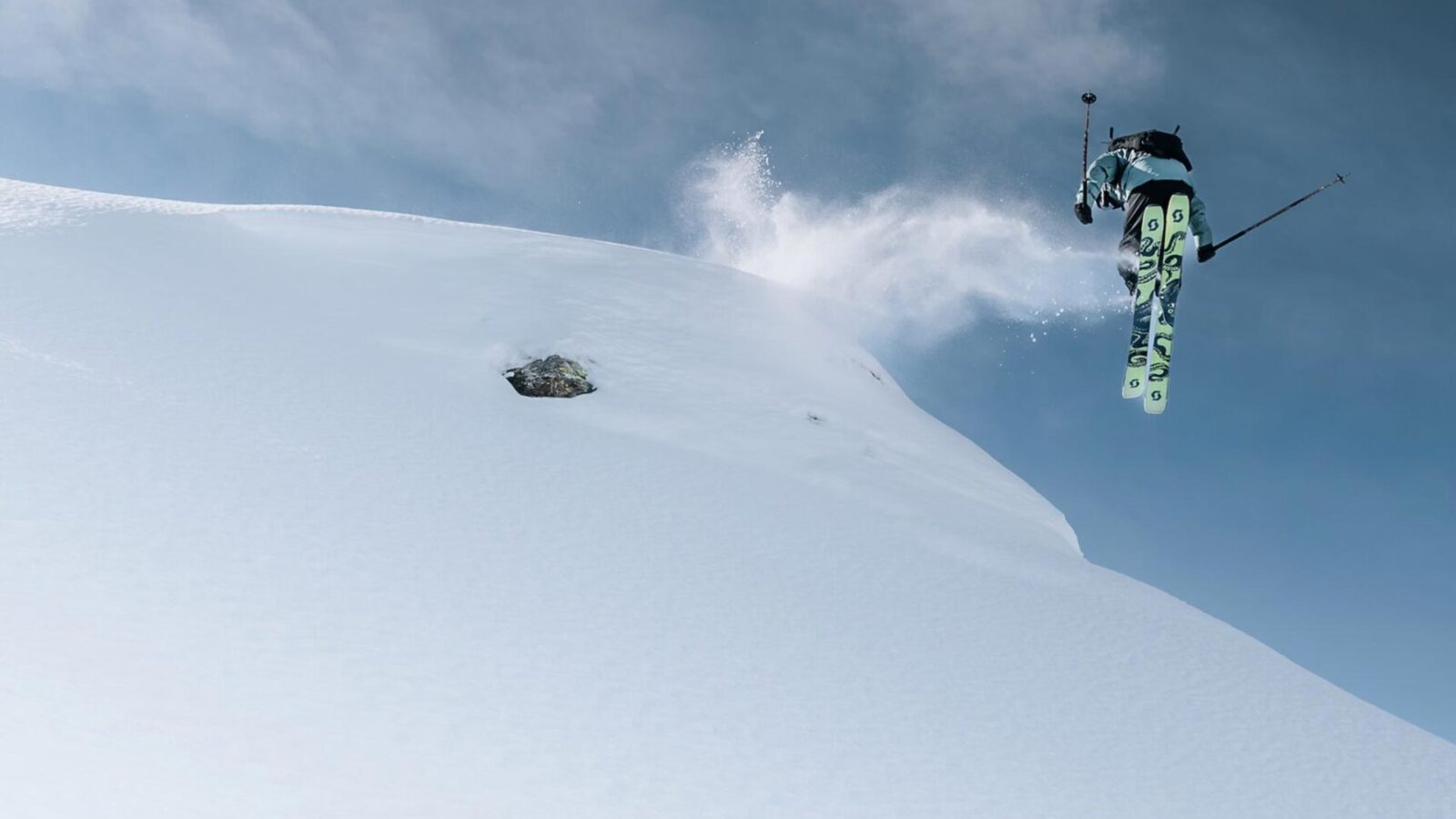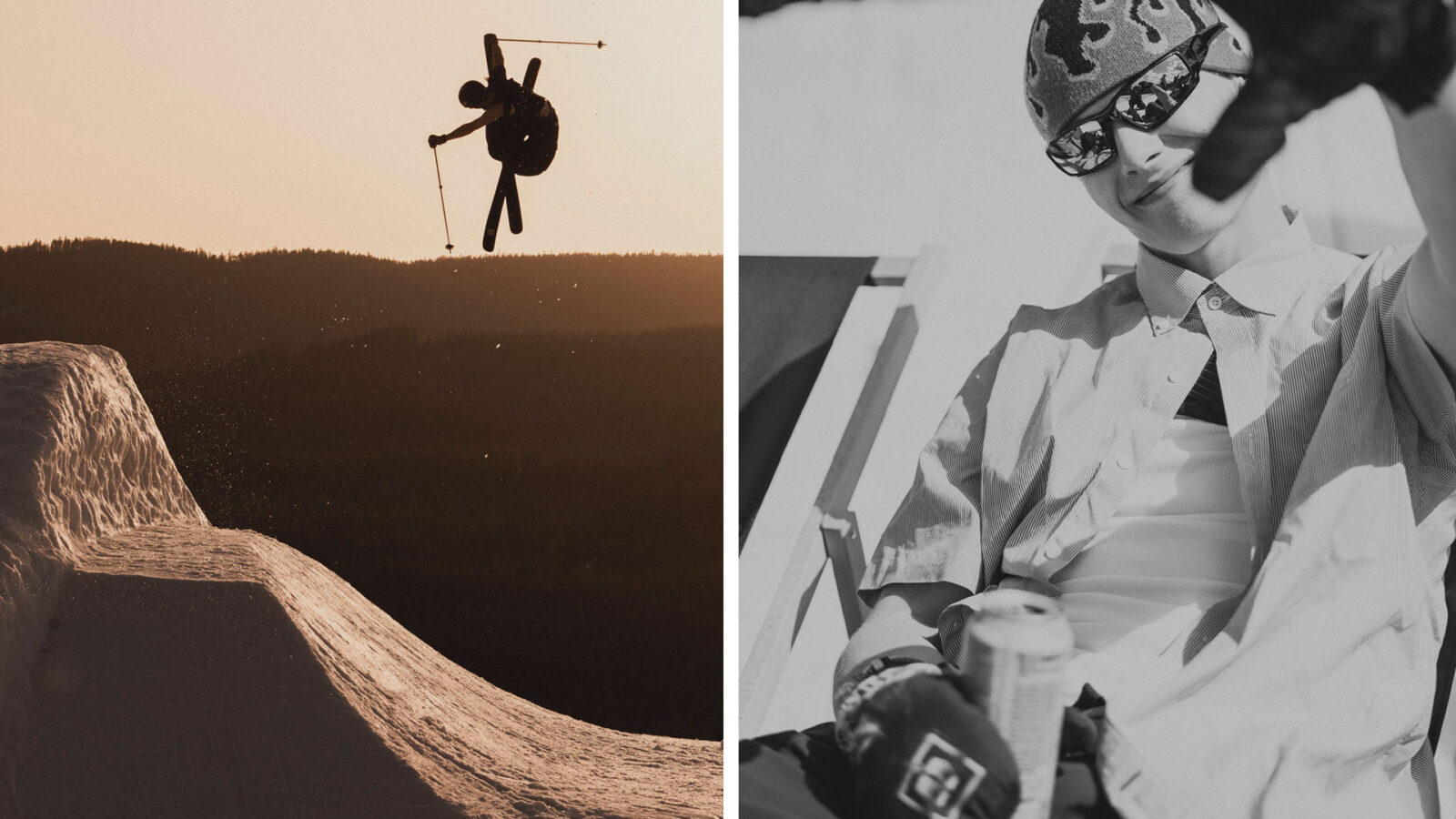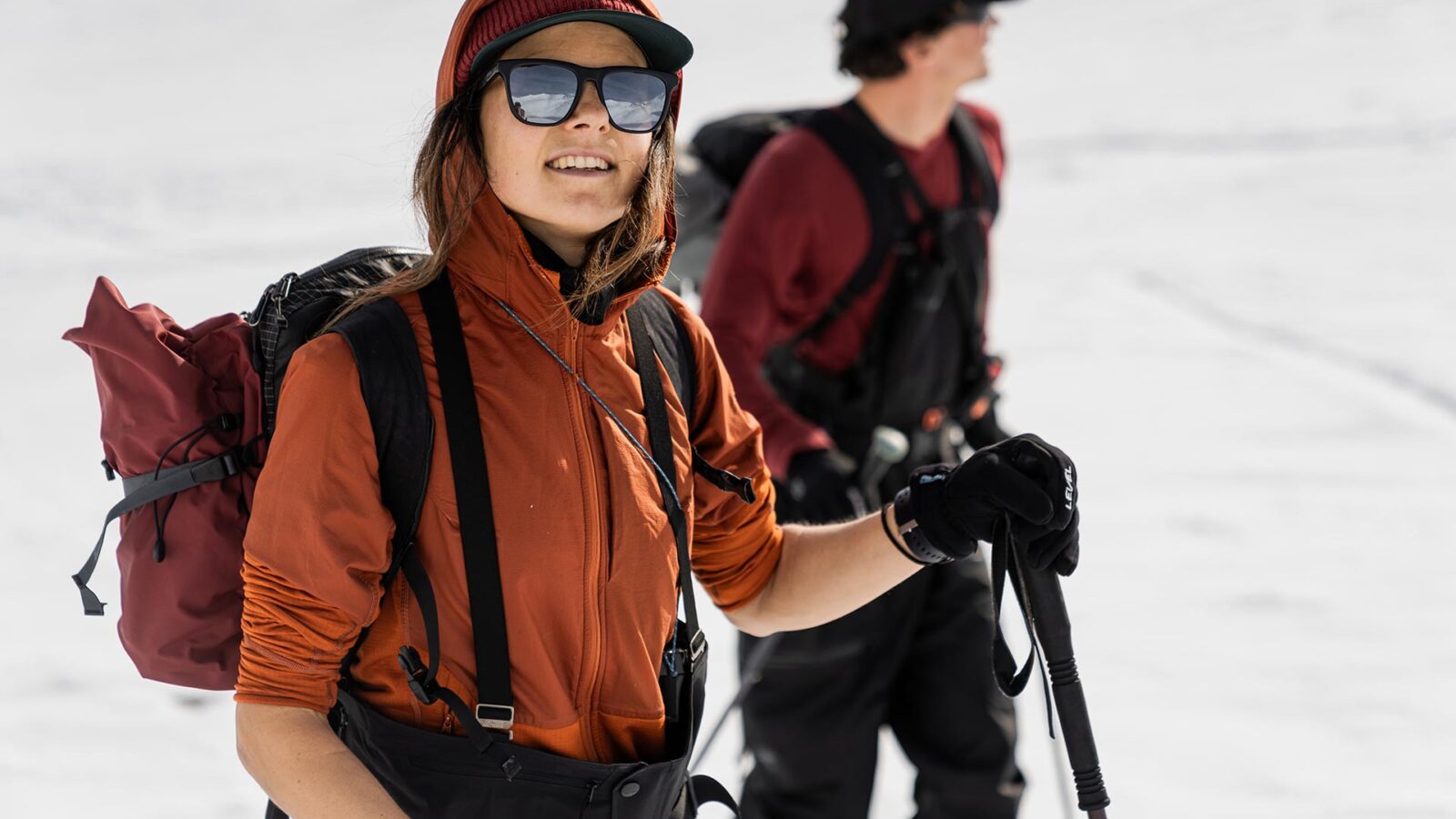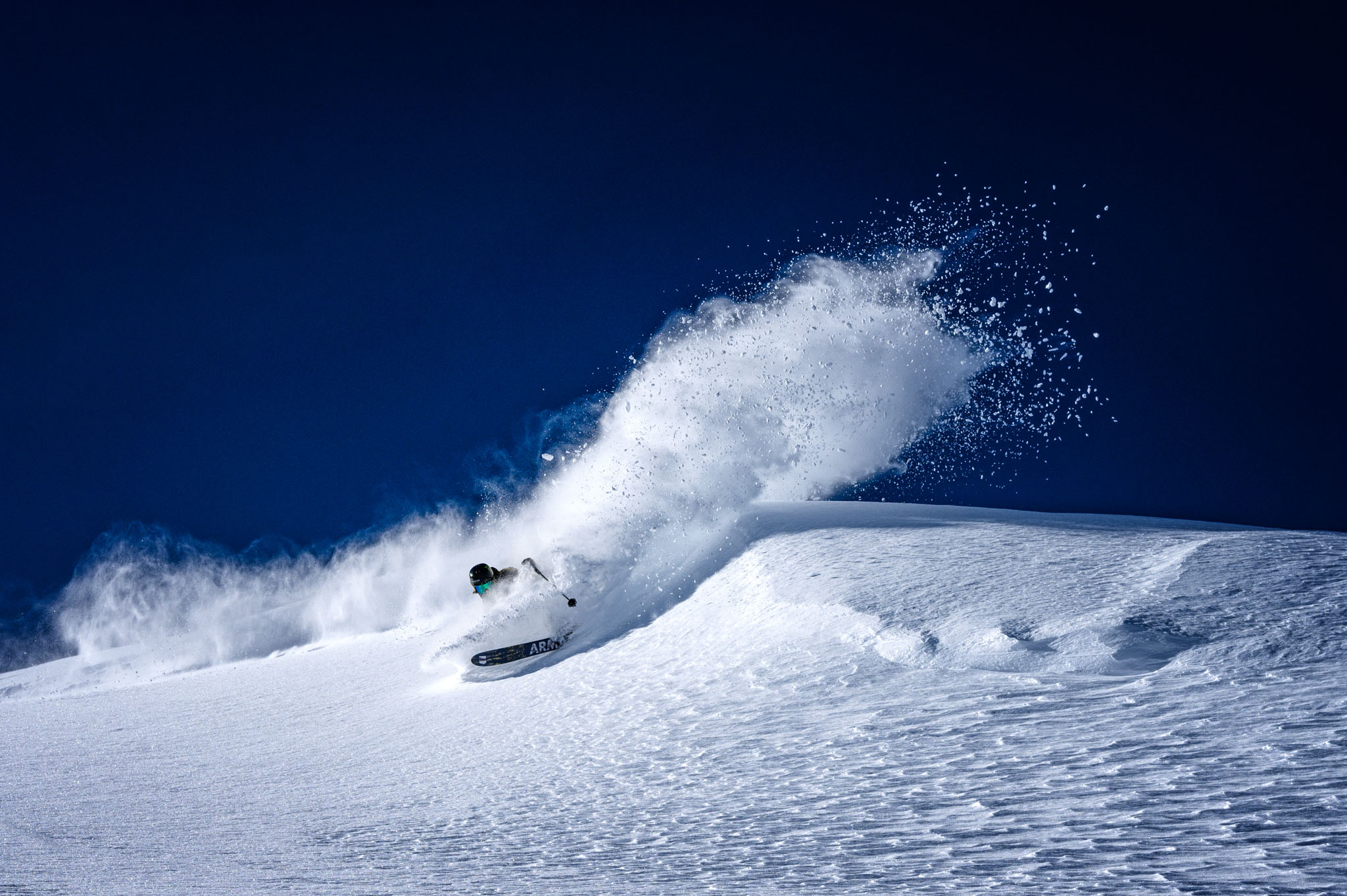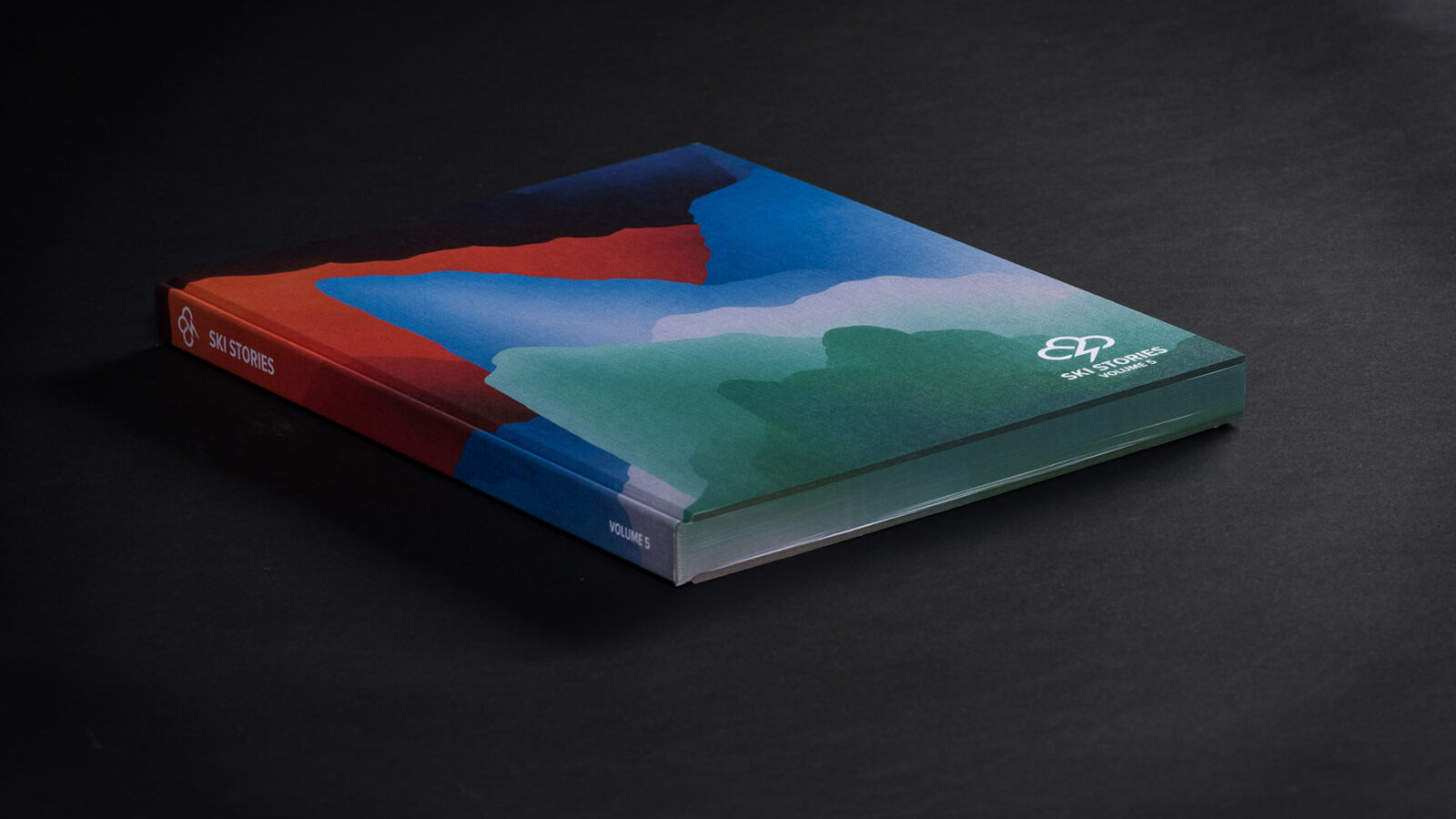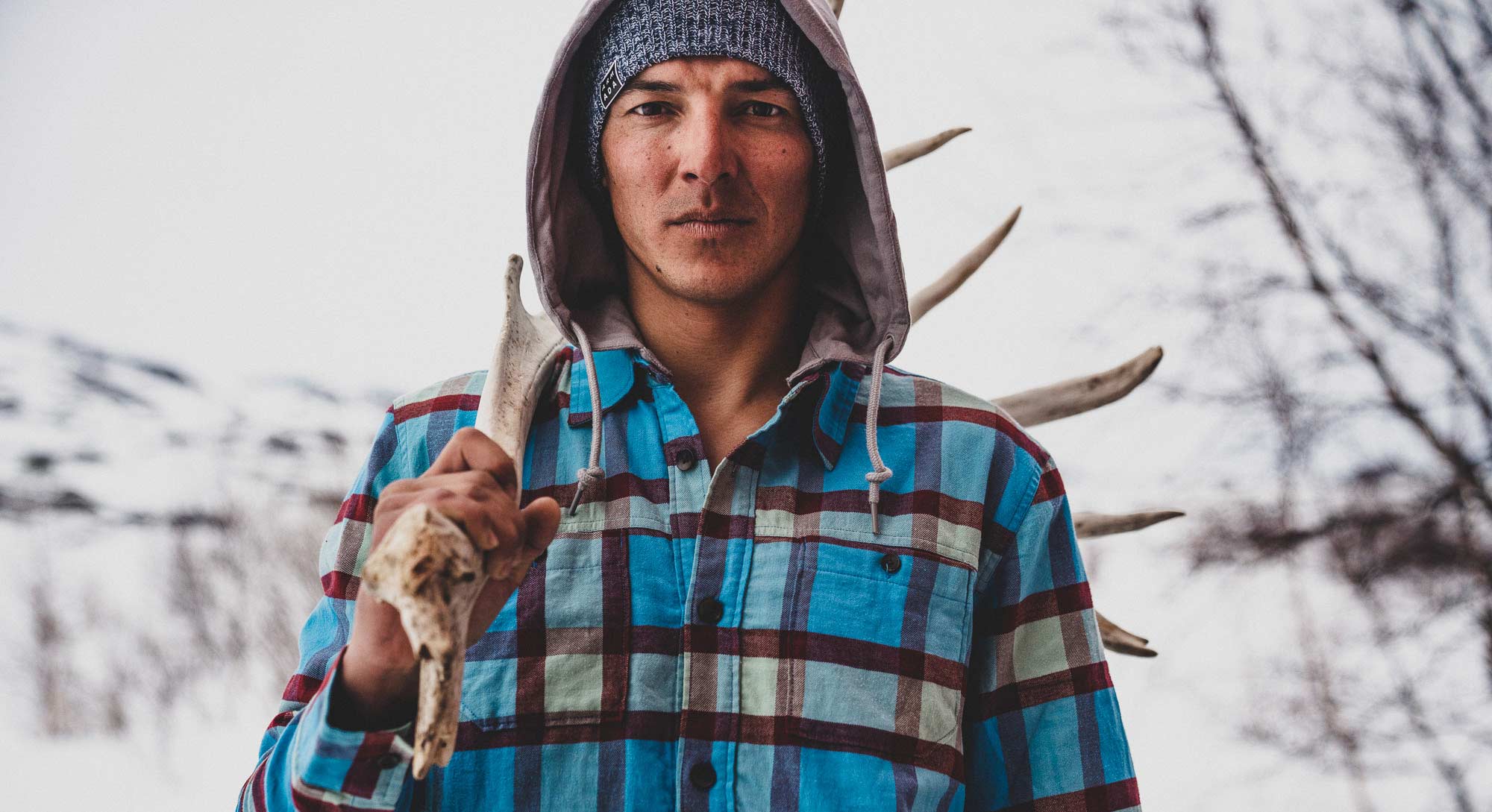
Stories
On Record: Tof Henry
When I first heard about Tof Henry, “the fastest man in Chamonix,” I kind of imagined he’d be like the top dog in many ski towns; a local hero who just straightlines everything. But when you see a video of Tof skiing, you see that he’s way more than that; and also why there’s so much hype around him. He skis in no-fall zones as if he’s skiing a giant slalom. In this interview I wanted to learn more the preparation and effort that it takes for Tof Henry to ski so effortlessly.
Interview: Matt Masson
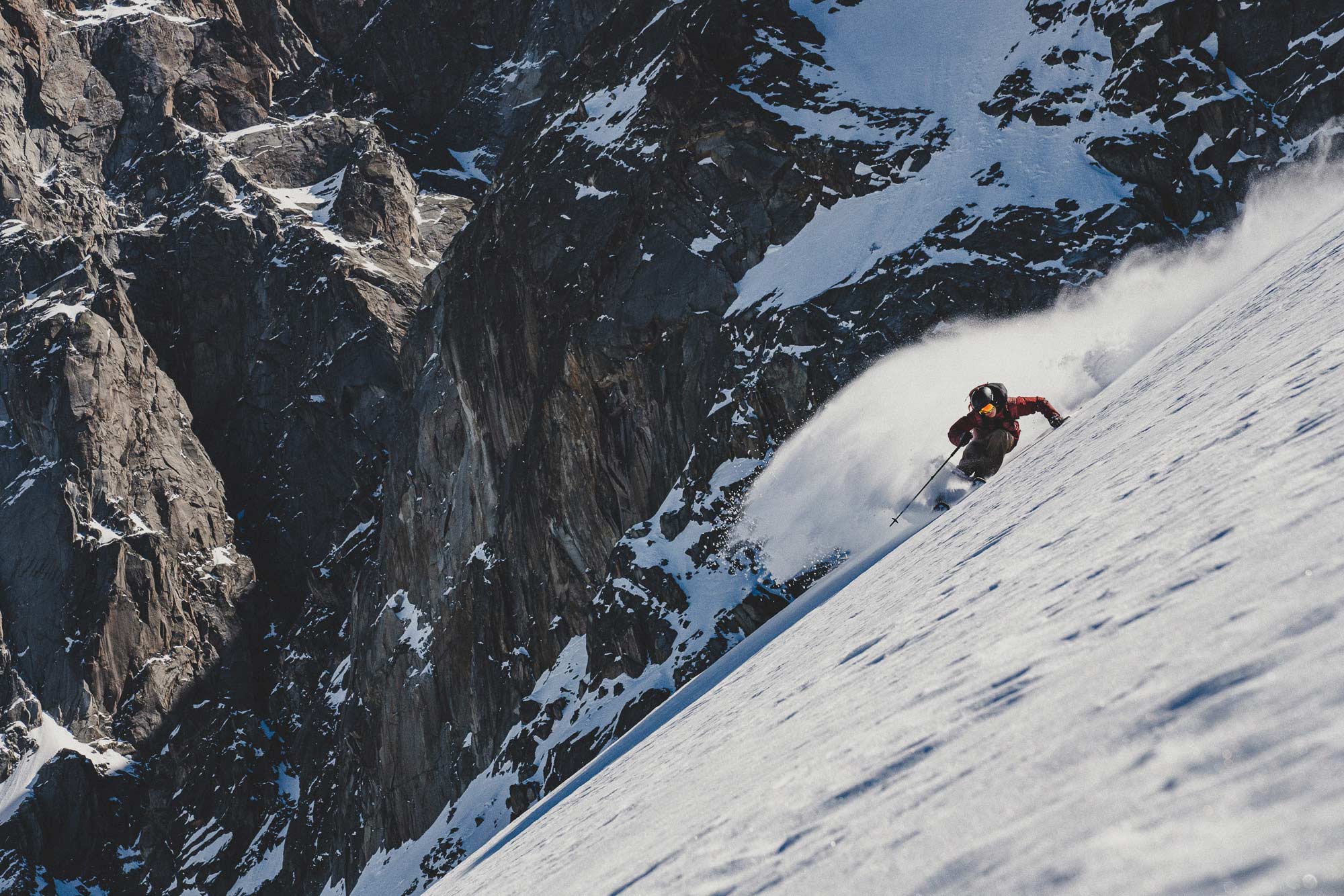
Photo: Rönnbäck
Hi Tof, you’re from a pretty famous ski town. Didn’t you grow up with former Freeride World Tour champion Aurelien Ducroz?
I grew up in Chamonix, so I was in the ski club. When I was 15, Aurelien and I started to explore more off the piste and into the big mountain. After that we took different paths. He started to compete and I did more big mountain and learned more. I actually ride more with his cousin, Loic, he’s a crazy good snowboarder.
Have you ever competed yourself?
I did compete, but it was a long time ago and the Freeride World Tour didn’t exist yet. I did one or two runs in Brevent but I fell, nothing good happened and I wasn’t attracted to the competition. When I first went to South America four years ago, I was invited to a freeride competition and to shoot for Armada. I competed there and finished second, and the next year I finished third behind Aymar [Navarro] and Leo [Slemett]. I was stoked! I don’t compete that much, and I podiumed in my first event.
The next day in the final, I caught a rock in the top section. I remember this cliff I wanted to hit, and when I got to the top of it I was a bit nervous because there were so many sharks. I remember thinking that I didn’t want to go, but I sent it and stomped perfect on a shark, and just tomahawked. I bruised my ankle, and realized I couldn’t go big mountain skiing afterwards. At that point I said, fuck competition. It’s nice when you can properly do your line as you planned it and stomp some tricks. But I think for me, I just want to choose my line and not wait. Outside of competition you have more freedom and you ski more.
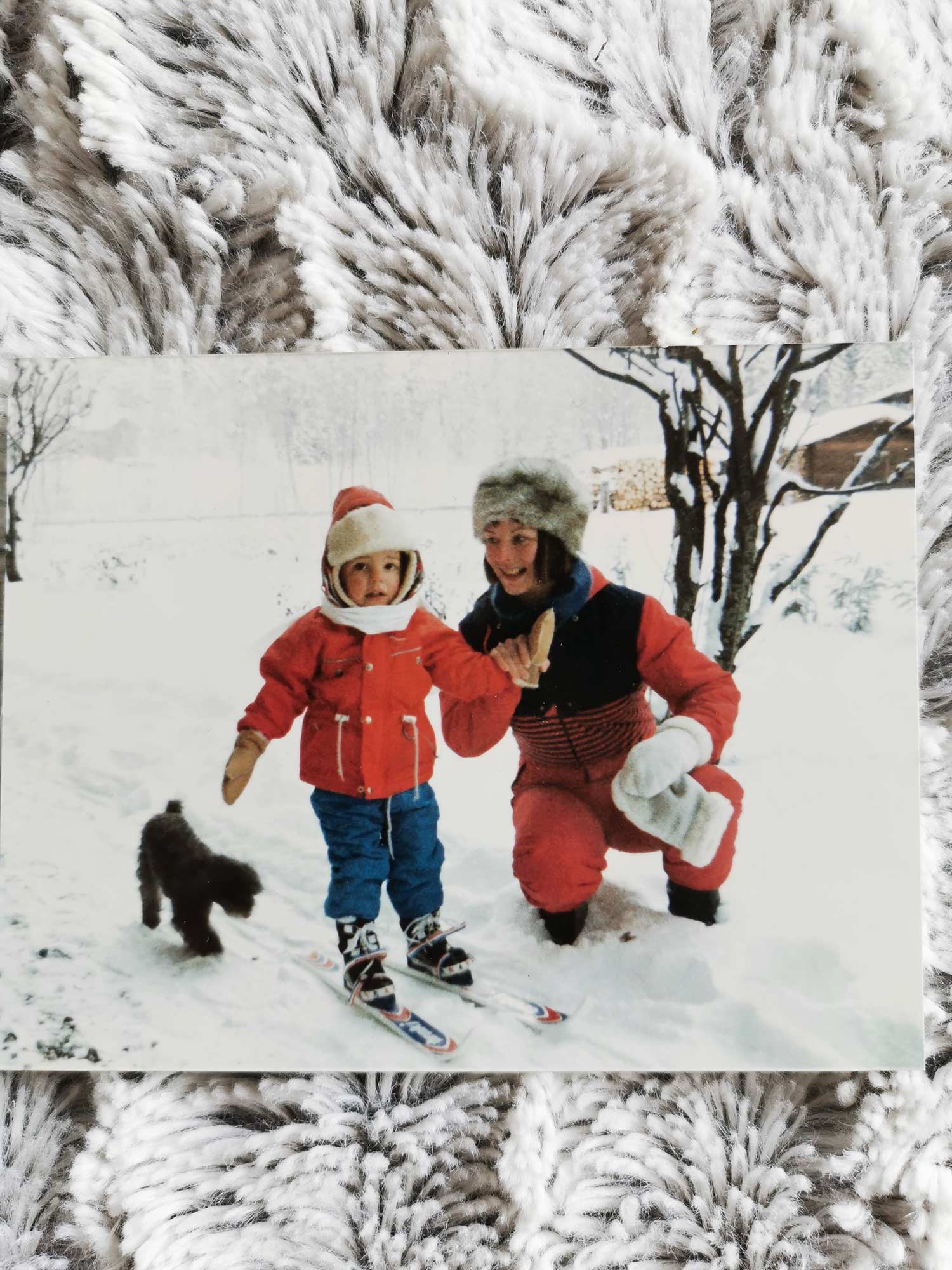
Young Tof in action.
There are people that say “judged freeride” is a bit of an oxymoron. What are your views on freeride competitions?
A way that freeride comps can be better– in quality and judging—is to do more runs, find better faces and perhaps with less riders. Maybe even the riders can judge along with the judges. At the end of the contest, the riders and the judges decide the winner. Then there would be no pressure, there’s no score or anything, you just finish your run. Everybody could just ride, and show a pure ride, not “Oh, this guy fell there, so I’ll change my line.” It would be more freedom on the mountain, you wouldn’t have radios, you wouldn’t have five guys around you if you fall. That’s my vision, but I know it’d be really hard to realize, to find the faces, good snow, everything.
Have you thought about doing your own contest like that?
It’s not my game, I love skiing too much and I love the mountains too much. Perhaps later, let’s see, but now is go time for me. I’m the perfect age to combine good climbing and skiing fast with knowledge.
You grew up in Chamonix, where freestyle isn’t so much of a thing. Have you ever done a few laps in the park?
Yeah, for sure. I actually jumped a lot when I was younger. I even moved to Avoriaz to jump and I loved it, but I realized how hard it is for the knees and body. In Chamonix we never had a good park; now we have one in Le Tour, but it’s not so big. We’ve always done more BC, but it’s the same with BC. I hurt my legs and back and realized that if you get hurt you can fuck up the rest of your season. The goal is April and May for the big mountain, but I love jumping and I want to have a section of backcountry freestyle or something. I’ve done jumps in the past with Jacob [Wester], I can stomp double flips and a decent cork 3. My goal this year is something else. I love flying, steepness and skiing fast. I want to find something: the instances are so short, like when you’re on a 45-degree slope and you’re going more than 100km/h, you almost fall between turns. It’s like a freefall, and this feeling is so crazy.

"This is Armada: Tof Henry" (2019)
You ski in no-fall-zones as if it’s a GS course. Do you even perceive how dangerous it is?
I’m always looking for the perfect conditions and I have to be in the perfect shape. I need to be sure that it’s the day to do it, if not I’ll make a stop or make it easier. For me now, with my friends, what we try to do is ski top to bottom without stopping. We actually do a lot of reconnaissance during the climb. On the way up, we can almost anticipate all the down. We know where the rocks are, where there’s ice or good snow and where the sluff’s going to go. You see the degree and the inclination of the slope. You imagine the turns you’re going to do and where the sluff’s going to go, and you know if you turn somewhere lower down, your sluff will catch you and you’ll fall like 600m. Climbing is exhausting because we go when it’s deep. Older people didn’t go in deep conditions, they went in spring conditions because they were on skinny skis and didn’t want to ski powder and cause an avalanche. During the climbs we are more exposed than in the past, because we love to ski powder and we want to ski fast. So that’s a big part, being safe during the climb, and it’s nice when you take your time to plan the way down. You feel the elements, you feel the mountains and when you reach the top, it’s the best.
We can find steeper lines from the [Aiguille du Midi] cable car, so we don’t have to climb because we arrive from above. We’ve been training in Glacier Rond and Cosmiques for years now. I’m 35 now, and I did my first decent when I was 16 or 18. Glacier Rond is probably the line I’ve skied the most; it’s long, steep and all-terrain. The more you ski that, the more experience you get about being in the steep and skiing fast in it. After that, you combine this experience with activities and knowledge in the other spots. We have a different approach if we arrive from the top, without climbing; we don’t know the conditions as well, but we know the terrain much better because we’ve done it so many times.
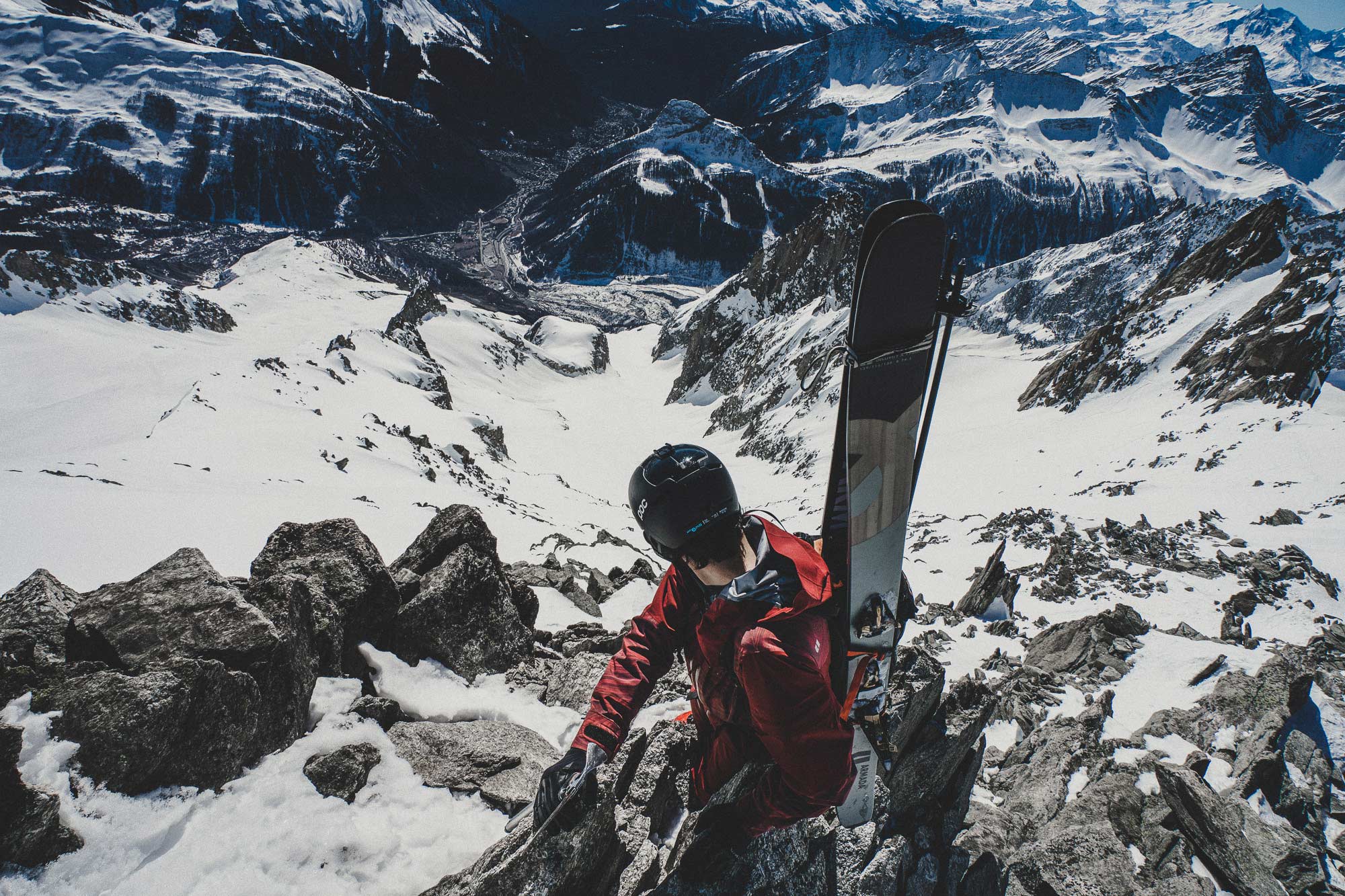
Tof in his element high above the Chamonix valley. Photo: Rönnbäck
In the movie “Born In Chamonix,” you said that the famous north-face route from the Aiguille Du Midi, the Mallory, is a “shit run.” Did you say that just to be controversial?
Haha, actually Daniel–the producer—released the movie at the last possible minute for the Powder Awards, and everything was so rushed. I didn’t even see anything, so it was a big surprise when I saw it. I did say that because so many people that go up the Aiguille think the Mallory is the best line because it’s under the cable car. For me it’s not the best line, but if you have the perfect conditions it could be a crazy line. You have to be lucky, you have to learn. I did the line a few days before [filming it] and waited for the storm, so before I did it I checked the ice, the rocks and everything. When it was in perfect condition I could go full gas, I knew where I was so I did it. I used the GoPro a lot to check, because then I can really see the rocks and anticipate it. Then you really know the line.

"Born In Chamonix" (2018) Full Film
Do you try to pick the best line for the conditions, or would you rather pick a line that’s never been done before?
I don’t care about the first descent. If I can do it, I do it, but my thinking is never about collecting first descents: “Four rappels, climb this side, la la la, four jump turns…” I can do it. When I go with Vivian Bruchet, the steep skier, and my stuff is twice as heavy as his stuff, then I can understand why he jump-turns and it’s so easy for him. I prefer not to jump and just drift, be close to the snow and play. It was cool to ski together, to see a different thing, but I really feel that what we do are different sports. If you are a really good skier, you can become a steep skier; but on the other side, it’s hard for people who do a lot of steep skiing to go super-fast like us in the pow. Everybody can ski slow, you can sideslip a line and say you did it. You can do five ugly jump turns and use crampons and say you did it.
You said in the past that you want to ski every line in Chamonix. How much is left that you still haven’t done?
There are perhaps less than ten lines that I really want to do. Afterwards, you can always do variations.
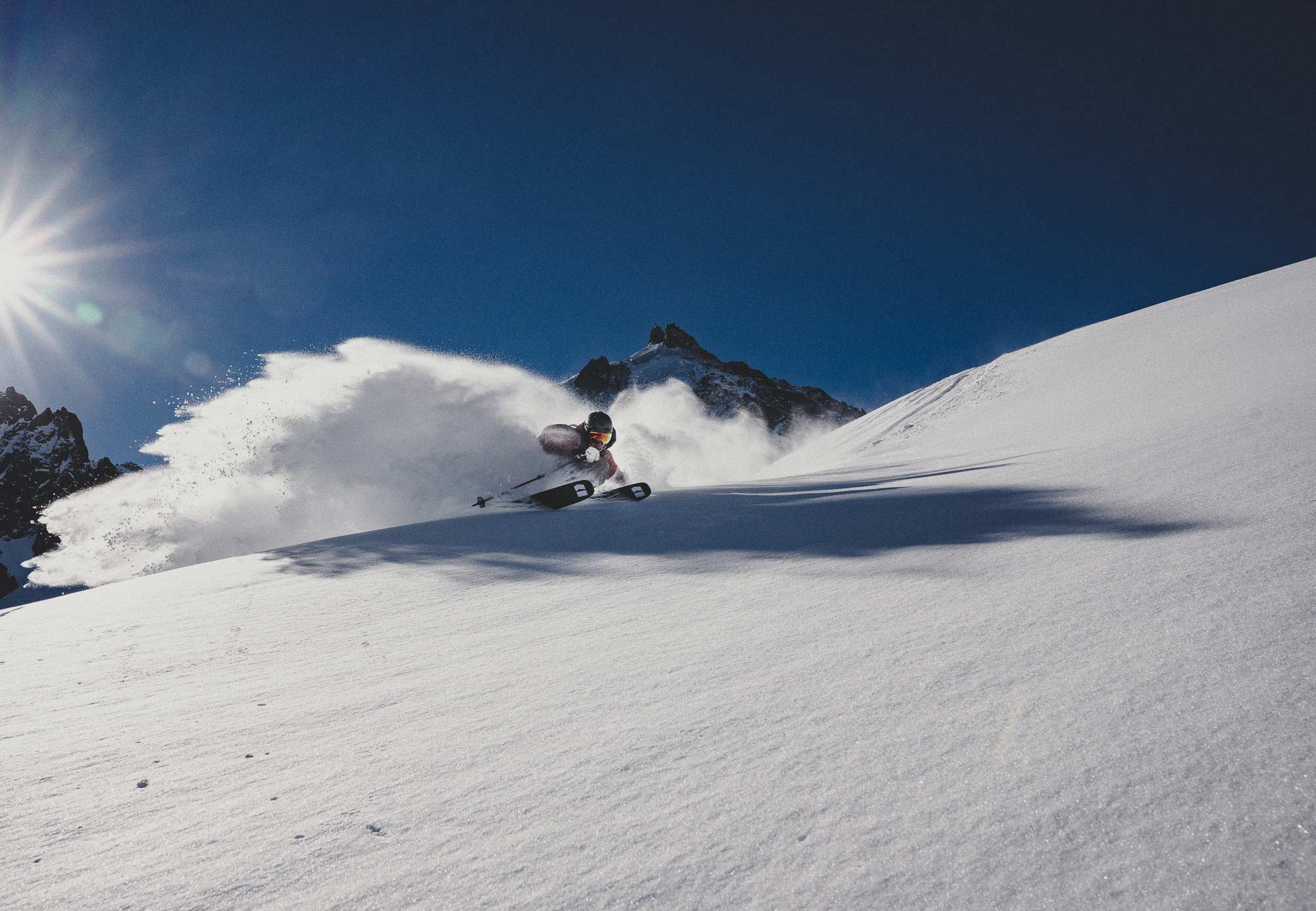
Photo: Rönnbäck
You spend your summers in Chile… are there any other mountains that you want to ski?
Sure, I dream about expeditions. I dream about skiing big stuff. I want to go to Nepal, India, Kashmir, big stuff! To do that, I need money, I need to find a good expedition, a good person to go with, to plan it well and be sure with the conditions. It’s really tricky and they’re big trips to organize, but I think it’s time to do it, and I hope I can. I really want to express my skiing in altitude and find something nice.
Ok, now onto Armada: how did they first approach you about sponsorship?
At the beginning I was sponsored by Sweet Protection for clothing and a French ski brand, really local. The distributor for Sweet Protection in France was also a distributor for Armada, and he told me he could give me two pairs of skis, I could be an ambassador for a year and we’d see how it goes. That’s the beginning of my story with Armada.
I started skiing the Norwalk a lot. It was my favorite ski because I skied the best with those. When I got the opportunity to make a new ski, I took the Norwalk and I told them that a couple of things were wrong with it, but it’s still a good ski, so let’s make it really good! The idea was to come back with the sidewall construction, make it stiffer and make a stiff tail. We put rocker just in the tips, gave it a longer radius and the perfect flex. I used to have the ski for a year and a half of testing between Cham and South America. I got different versions with different stiffness and weight. Finally we got there, and I was so excited when the new ski, the Declivity X, came out. After a year of the ski on the Zero Collection, Armada decided to make a whole family. Next year we’ll launch the Armada Declivity series, so my ski, the Declivity X, will be part of a bigger series.
No one–apart from you—really needs a ski like the Declivity X. Is the Declivity series an attempt to give the public a taste of skiing like Tof Henry?
I think Armada wants to build a ski for the slope and something aggressive. For me it’s both good and bad, because if I had the opportunity to make the family, I would make the family for the big mountain, and the series would be a variety of skis for the big mountain, not for the piste. But it’s also good to attract more people into the family, and it’s hard to make a ski that can do both.
What projects are you working on this season?
This year I have the budget to have a filmer who works with me in Chamonix almost every day. If we have the conditions we try to shoot everything in Chamonix or Italy, most weekends. I want to show a bit of everything and be really diverse: top-speed freeride, good steep skiing and film a little jib and tree stuff. I also want to shoot a project in Chile. It’s so wild, you have to walk a lot and you can meditate a lot. You find a new descent in every valley. It’s beautiful and there’s no heli, no phone, nothing. It’s far from everything.
